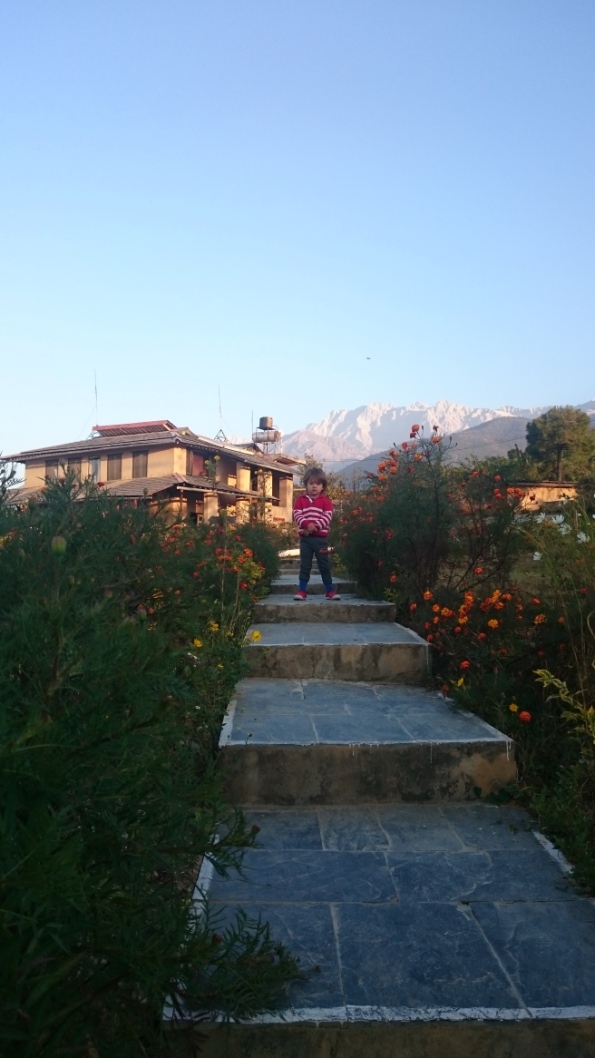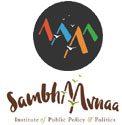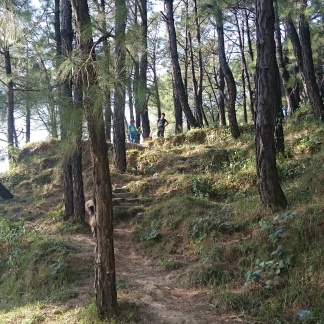Yesterday I was breathing some of India’s purest air; today its most polluted. I have just arrived in east Delhi which has the distinction of having not only the country’s but also the world’s worst air quality – and it is Diwali, festival of toxic firecrackers (a sample front page article from today’s papers). The contrast between here and Kandbari, where I was fortunate enough to stay for a few days, could not be more pronounced.
Kandbari is a large village in a fairly unexplored part of Himachal that is nevertheless chocolate-box pretty. The hills here are low enough to be covered in greenery, from majestic pines to thick bamboo thickets, and criss-crossed by khads – small, and some not so small, streams with water so clear it has that emerald green shimmer to it, tumbling down the slopes on all sides. Behind them stand tall mountains which draw your gaze irresistibly to their shifting faces throughout the day, and stay with you at night as you shiver in bed. And dots of colour – from flowers, saris, topis – so brilliant it seems as if God has photoshopped them; by contrast even the brightest Diwali fireworks in Delhi are rendered pallid by the smog that suffocates the city. Staying there I was reminded of some of Kalidasa’s most enticing verses describing the Himalayas, the ones that make you want to shut the book and jump on the first train north.
But I wasn’t there (just) for the scenery… After hearing from many friends about an interesting place named Sambhaavnaa in the hills, I had asked if Uppu and I could visit for a short week to participate in and learn more about their work. Although they understandably prefer longer-term volunteers, the team graciously welcomed us and gave us the freedom to join in where we could, from making rotis to cataloguing library books.
Sambhaavnaa has a strong political slant and focuses on trying to raise awareness of and find solutions for injustices in our world, from gender to the environment. It is an upbeat and vibrant place, with workshops attracting young people from across the country and long-term volunteers who are passionate about the causes they believe in. In addition there is an open-learning centre called Udaan where children from nearby can come to use the resources, and be guided by more experienced hands if they so wish, in a fear-free environment. Udaan also currently runs a small playschool and its sun-warmed veranda seemed to be always filled with children, teenagers and adults chatting and working on various projects side by side.

The few buildings that make up Sambhaavnaa and Udaan, scattered along a hillside, were constructed with sun-baked bricks, a really successful mud-and-straw plaster (must get that recipe) and lots of bamboo. Most have a second level, with a floor supported by bamboo rafters and a little bit of concrete and steel, and a cowdung-mud flooring or tiles. There are no gates and no fencing; people are free to walk right through the campus, and many of the locals do just that on their way from one hamlet to another – a fitting symbol for the level of integration the institute has reached within the community.
For the two five year olds who currently live there it is difficult to imagine a more perfect life. Watching Uppu race down to the khad with them made me realise more than ever that it is this, a childhood rich in nature, animals and people, that he needs, and little else.


